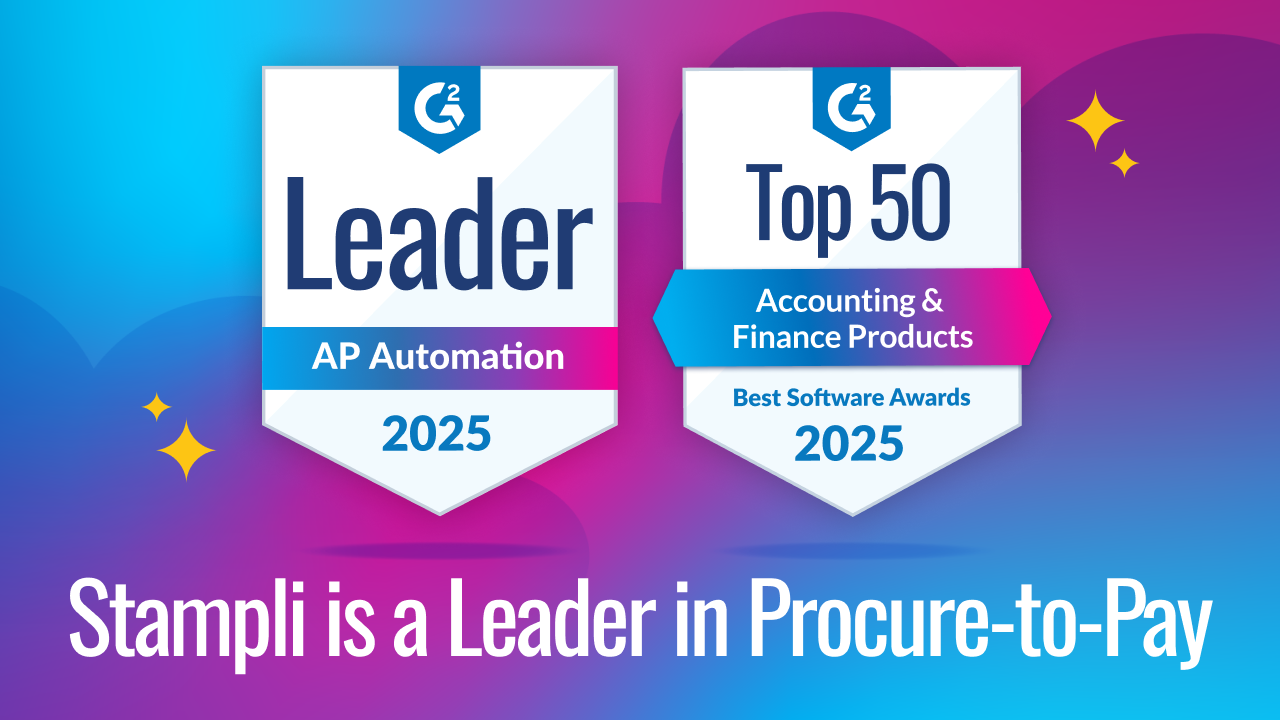How to speed up invoice processing time with AP automation

Faster invoice processing offers many benefits, including fewer missed payments, improved cash flow, and stronger vendor relationships. But how do you transform your accounts payable processes to achieve these benefits?
In this guide, we’ll show you how to improve invoice processing speed by making a few tweaks to your AP processes and strategically investing in AP automation software. You’ll get a toolkit that includes:
- Industry benchmarks and metrics to see how your AP department stacks up.
- The most common invoice processing problems and bottlenecks.
- Strategies you can use to speed up invoice processing.
- How to use AP automation software to streamline your AP workflows.
Let’s get started.
The top 6 invoice processing benchmarks
You can evaluate your company’s invoice processing efficiency by comparing its performance metrics to industry standards and competitors’ operations. To get a complete picture of invoice processing efficiency, look at these six key invoice processing metrics:
1. Invoice processing cycle time
Definition: Invoice processing cycle time is how long it takes to process an invoice from receipt to payment.
Benchmark: In a 2023 survey of finance leaders by Stampli and Probolski Research, approximately three-quarters (67.7%) reported that their invoice processing cycle time was under one week. Slightly over half reported that they (51.6%) process over 500 invoices per month.
How to use: Invoice processing cycle time measures your end-to-end processing efficiency. It can tell you at a glance how your accounts payable department’s performance compares to other companies.
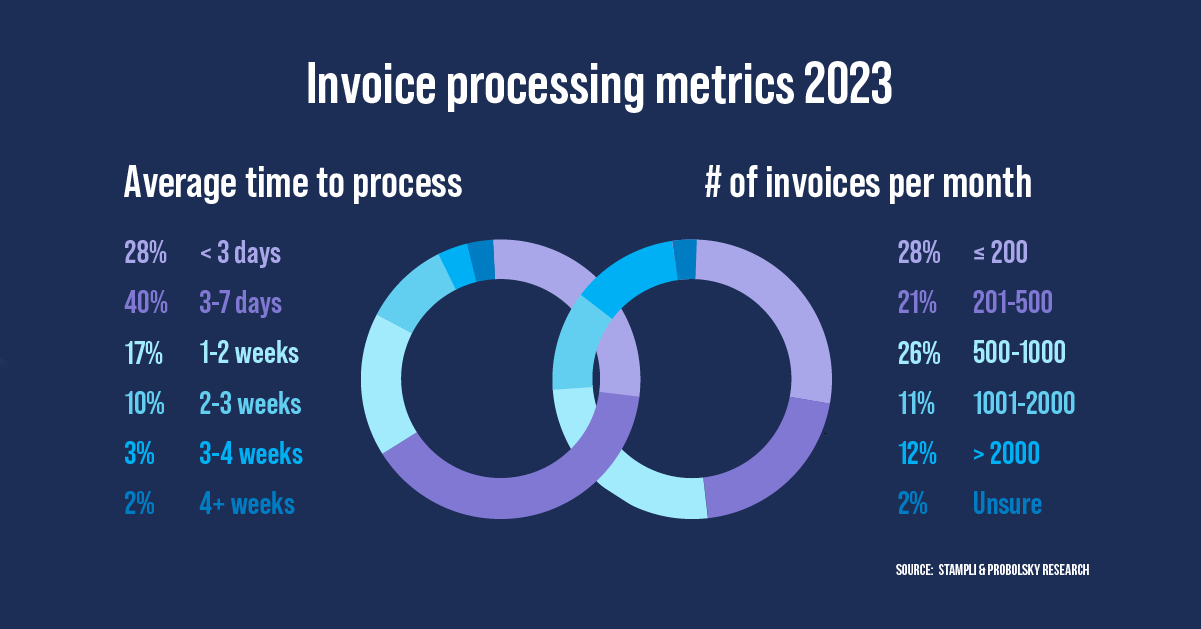
2. Days payable outstanding
Definition: Days payable outstanding (DPO) or accounts payable days is the average time it takes an organization to pay vendor invoices over a specific accounting period.
Benchmark: According to the American Productivity & Quality Center, the median DPO across all industries is 39 days.
How to use: Compare DPO to your vendors’ payment terms to ensure your company pays invoices on time and avoids late payment fees. For example, if your DPO is 50 days, and your payment terms are Net 30, your business may be incurring late fees.
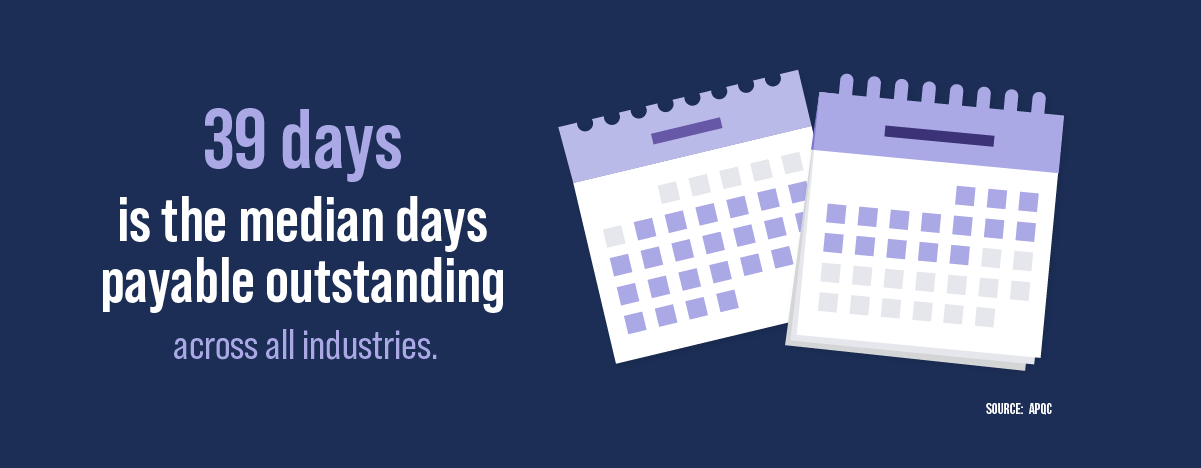
3. Invoice receipt to approval time
Definition: Invoice receipt to approval time measures the time it takes to capture, code, match, and approve an invoice.
Benchmark: According to the APQC, the median invoice receipt to approval time is four days.
How to use: Identify bottlenecks in your invoice processes by comparing your invoice receipt to approval time to the industry standard.
4. Invoice approval to payment time
Definition: Invoice approval to payment time is the time it takes to pay an invoice after it has been approved.
Benchmark: Based on the average invoice processing cycle time of seven days and invoice receipt to approval time of four days, the approximate average invoice approval to payment time is three days. However, the median DPO is 39, indicating that many businesses wait to pay vendors until the payment is due.
How to use: Use your invoice approval to payment time to gauge the efficiency of your payment process. For example, if you pay most invoices via paper check, this metric could be higher than average.
5. Number of invoices processed per full-time equivalent (FTE)
Definition: The number of invoices processed per FTE measures the average productivity of your AP employees.
Benchmark: According to the APQC, the average number of invoices processed per FTE per year is 11,111. For firms that have fully automated their AP processes, it’s 20,934 per year.
How to use: Use this metric to evaluate the productivity of your AP employees and forecast future labor requirements as invoice volumes increase. You can also use it to gauge the potential productivity gains from implementing AP automation.
6. Average cost to process an invoice
Definition: The direct and indirect costs (e.g., labor, file storage, etc.) associated with processing an invoice.
Benchmark: According to Stampli’s analysis of AP automation costs, the approximate labor cost to manually process an invoice is $7.75. With automation, the approximate per-invoice cost is $2.02.
How to use: Combine the average cost to process an invoice and the number of invoices processed per FTE to estimate the per-FTE labor cost for invoice processing. This will help you calculate the ROI of different strategies to improve invoice processing efficiency.
Benchmarking your AP processes will provide valuable insight into opportunities to streamline invoice processing and help identify areas for improvement. Let’s look at the most common obstacles to efficient invoice processing.
What causes slow invoice processing times
In 2021, Stampli surveyed 282 CFOs, controllers, and finance leaders about their biggest accounts payable headaches and bottlenecks. They reported that slow approvals (18%), too much paper (15%), and too many manual processes (15%) were their three biggest headaches.
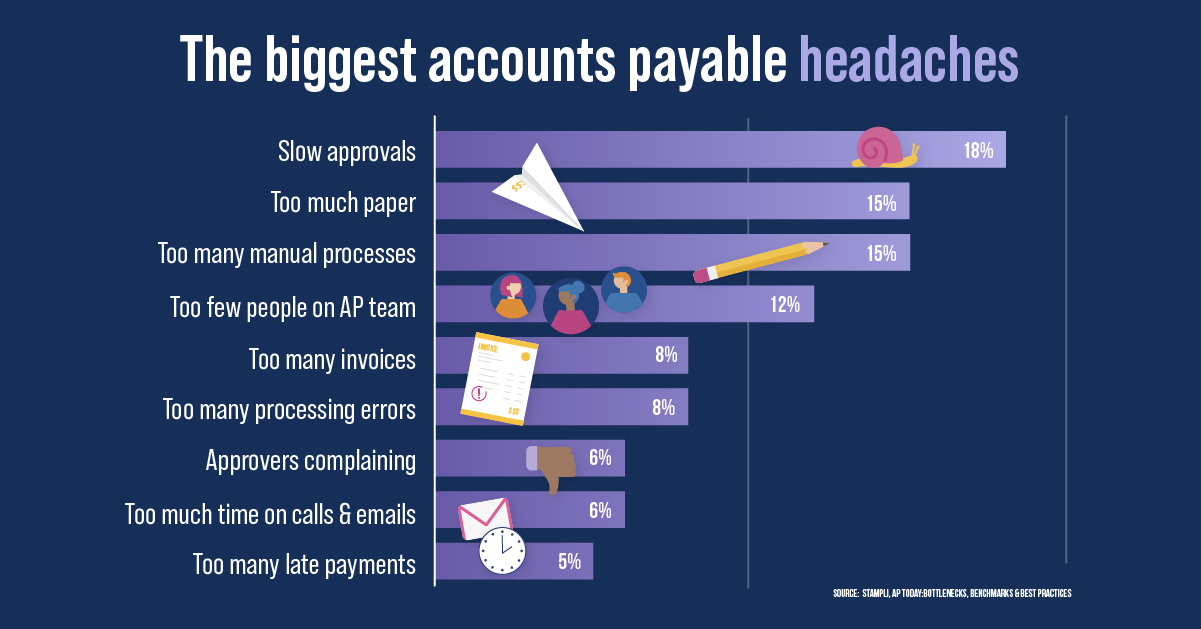
It’s critical to identify the root causes of these headaches and bottlenecks. While some, like too many invoices and too few AP team members, are obvious, others need a closer look.
Inadequate technology and software
Inadequate software and technology solutions can be a significant obstacle to efficient invoice processing. Working with a system that is overly complex, lacks processing power, or doesn’t offer AP-specific functionality creates broken workflows and frustrates AP teams. Here are some of the most common technology shortfalls:
Outdated technology: Although they may be trusted, tried-and-true solutions, outdated platforms can hinder efficient processing. They often lack modern automation features, don’t integrate with other platforms, and may not have the processing capacity to manage large volumes of invoices.
Lack of integration: If software platforms lack the ability to integrate with ERP or accounting software, accounts payable (AP) teams must manually enter and re-enter data across multiple systems. This increases the risk of invoice processing errors and slows down processing.
No AP automation features: If systems lack accounts payable automation, AP teams must manually perform invoice processing tasks like invoice data entry, coding, and matching.
Slow and error-prone manual processes
Despite investing in ERPs and other digital solutions, many AP teams continue to rely on manual processes. Inefficient manual processes like entering, coding, and verifying invoices and then routing them for approval are slow and susceptible to errors. Here are some of the most inefficient manual AP processes:
Manual data entry: Physically entering invoice data into an accounting system, looking up and applying GL codes, comparing invoices to purchase orders, and forwarding invoices to the right approvers is time-consuming. It’s also prone to errors that can lead to significant delays in invoice processing.
Slow and complicated approval workflows: The process of determining the right approver, forwarding the invoice for approval, and obtaining sign-off often results in delays. Invoices can go to the wrong approver, or approvers can be unavailable or may forget about the invoice.
Inefficient document handling: Manual document management tasks like printing, reading, filing, and searching for paper invoices, purchase orders, receipts, and contracts can slow invoice processing to a crawl.
Making strategic improvements to your AP workflows can address challenges with inadequate technology and inefficient manual processes. Let’s look at the most effective ways to speed up invoice processing.
Strategies to speed up invoice processing time
Manually processing invoices with poorly integrated, outdated digital technologies results in a long invoice processing cycle and late or missed payments.
Here are the most effective strategies to optimize your AP processes and gain control over invoice processing times.
1. Automate accounts payable processes
Implementing a modern financial automation system is the most effective way to speed up invoice processing. Automating slow, error-prone processes, optimizing workflows, enforcing controls, and providing accurate, real-time data gives total visibility and control over AP processes.
Automated data capture ensures speed and accuracy
AP solutions automatically capture, code, and verify invoice data, significantly increasing processing efficiency and reducing errors.
Workflow automation streamlines approval processes
Many systems automate approval routing, using rules-based workflows that forward invoices to the appropriate approver. They also send reminders if approvers don’t sign off on invoices within a certain time.
ERP integration ensures data consistency and efficiency
Financial automation platforms can integrate with ERPs and accounting software to synchronize AP data and communications across your organization. They expedite invoice processing by ensuring that AP teams can access the resources and people they need to process invoices efficiently.
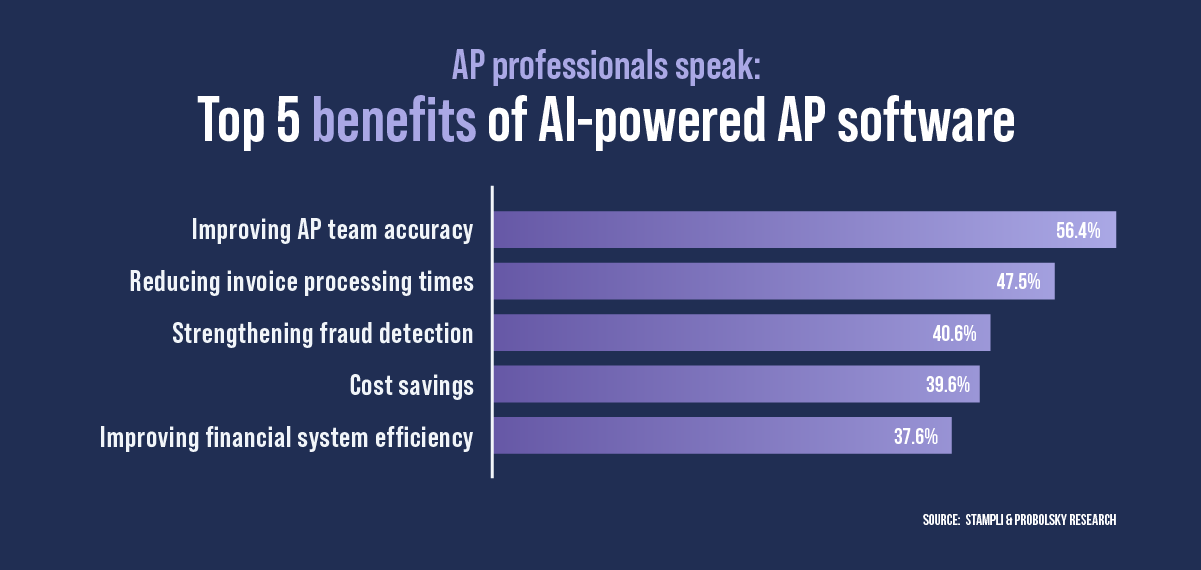
Go beyond basic AP automation to maximize efficiency with Stampli
Most financial automation platforms offer basic AP automation, approval workflows, and ERP integration. However, these basic solutions often fail to fully automate AP processes or require AP teams to switch between applications and menus to process invoices.
Stampli is the only financial automation platform that’s designed for how accounts payable departments work. It offers several advantages over other automation platforms:
AI copilot empowers AP departments
Stampli uses artificial intelligence and machine learning to empower AP teams, not replace them. Billy the Bot, Stampli’s AI copilot, learns your business processes to automatically extract and code invoice data, match POs, invoices, and receipts, and route invoices to the correct approver.
“This is my first time working with an AP system, and Billy the Bot’s ability to fill in the coding after a few uses is amazing,” says one Stampli customer. “Instead of having piles of paper, everything is in one place…all the data entry is almost eliminated. Changing controls and easy set up has been great. Customer support is outstanding. We have multiple locations and multiple people that do AP and it’s been easy to keep things separate as well as know what everyone is doing.”
Prebuilt ERP integrations support full functionality with no ERP rework
You can implement Stampli’s pre-built ERP integrations in days, not weeks, without changing your ERP or AP processes. Stampli automatically syncs POs, invoices, and AP data to ensure fast and accurate invoice coding and matching — reducing errors and speeding up invoice processing.
2. Improve internal controls and invoice approval workflows
Establish clear and consistent rules, controls, and workflows to control errors and fraud and ensure every invoice is reviewed and approved efficiently.
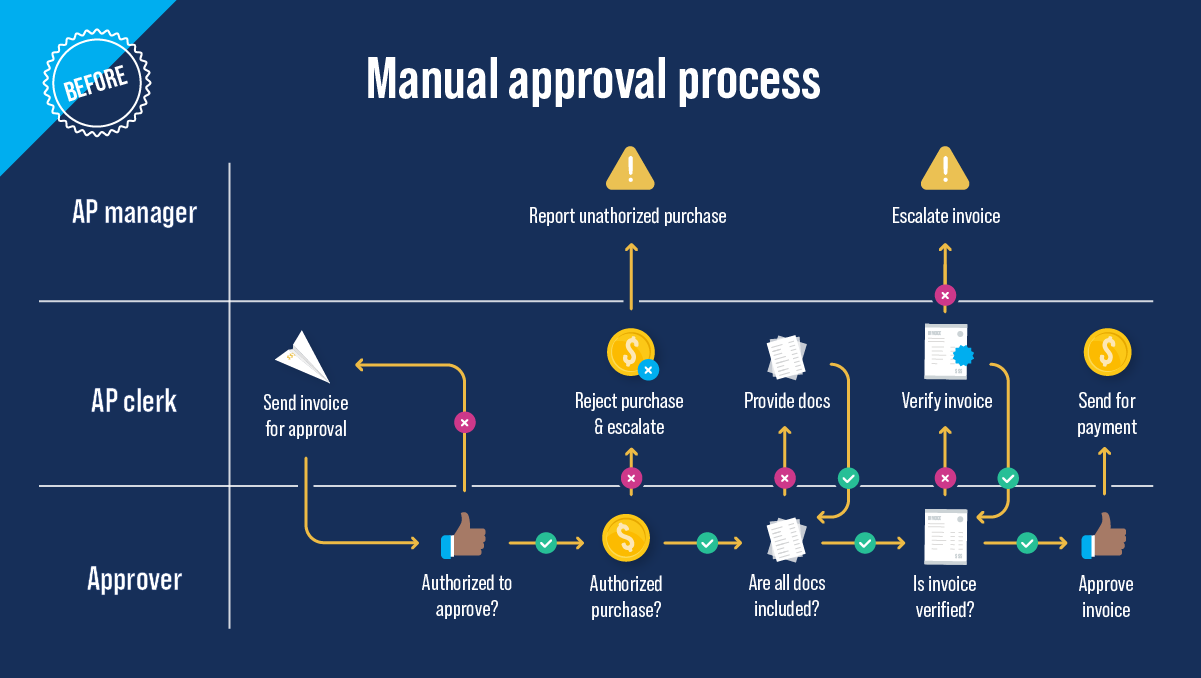
Define approval workflows and roles
Create and document clear rules for invoice approvals to prevent confusion and ensure you oversee spending. Specify which position handles which approvals and set value thresholds to ensure senior management reviews large expenditures. Determine which expenditures require multiple approvals and establish clear escalation paths and routing rules if an invoice is misdirected or delayed during approval.
Enable mobile approvals
Consider financial automation platforms that provide mobile approval capabilities to allow approvers to review and authorize invoices when they are out of the office.
Automate controls and approval routing
Choose an AP automation system that allows you to set user roles, define internal controls such as separation of duties, and maintain a complete audit trail to ensure accurate invoice processing and prevent fraud and errors. Also, look for platforms that offer customized or dynamic approval routing features to maximize approval routing flexibility.
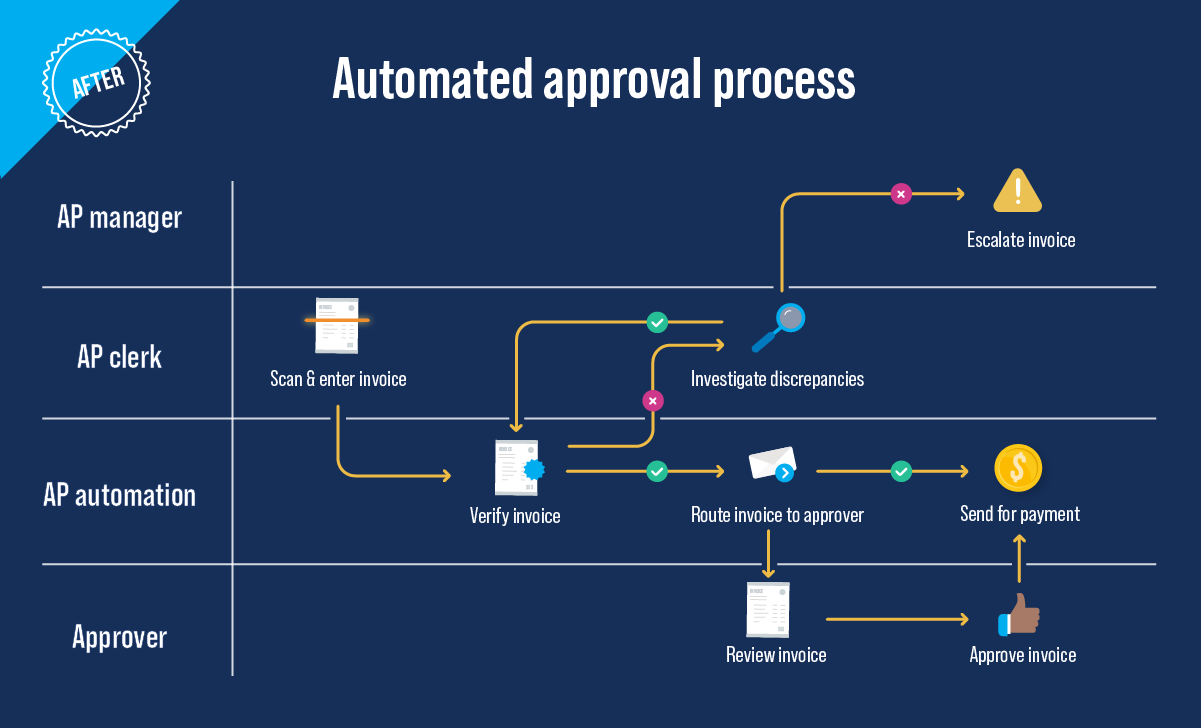
Flexible approval routing with dynamic workflows from Stampli
Many financial automation systems offer approval routing to automate the approval process. However, their rules-based approval processes lack flexibility and require IT rework if business processes change. Stampli provides customers with a choice between fixed and dynamic workflows. Dynamic workflows use ML technology to learn your cost accounting and approval processes. They automatically sense and adapt when your business rules change, with no IT rework needed.
“Stampli helped us streamline invoice approvals and data entry,” says a G2 reviewer. “Our AP team spends significantly less time processing invoices, which allows them to work on other projects. In turn, they are getting a more well-balanced set of tasks and growing in their careers. Lastly, our invoice approval time significantly decreased from 5-7 business days down to 3 business days.”
3. Centralize accounts payable communications
AP teams often rely on emails, phone calls, and in-person conversations to communicate with stakeholders, other departments, and suppliers. This can result in miscommunication and lost information, slowing down invoice processing. Centralizing communications ensures that everyone is on the same page.
Centralized communication hub
Many financial automation platforms offer centralized communications that allow approvers, AP staff, and vendors to ask questions, review past conversations, and request information. Centralizing communications speeds up processing by ensuring AP teams can access the people and resources they need to process invoices.
Visual AP reports and analytics
Some AP automation solutions provide real-time accounts payable reports and analytics, enabling finance leaders and AP teams to check invoice status and monitor processing efficiency. Many platforms also track and record every communication, transaction, and user action to provide a complete audit trail.
Stampli turns the invoice into a communications hub
Several AP automation platforms offer in-app communications, but Stampli goes beyond by centralizing all communications on the invoice itself. It turns each invoice into a communications hub for messaging, documentation, coding, and approvals. By keeping all communication directly within each invoice, Stampli reduces errors, saves time, and enhances collaboration. AP teams can check invoice status and next steps at a glance, communicate with approvers and vendors, and attach files to conversations. The conversation history is date and time-stamped and fully auditable for compliance.
One customer relates how Stampli has made AP communications transparent and efficient: “I like the transparency the various tools give to the AP process. Anyone is able to submit invoices for review and processing. Our department managers and directors feel more in control of their expenses and the approval process. Transparency has skyrocketed and we’ve gotten our AP lifecycle time down from over 3 weeks to about 13 days….
“Stampli has also streamlined our communications around invoices. We used to have multiple email chains, notes hand written on the invoices, etc, and now all communications are centralized. It’s cut down on the blame game, like ’so and so said this about the invoice but the AP clerk didn’t record it and now the info is lost.’”

4. Automate and optimize PO and invoice matching
PO and invoice matching is one of the most time-consuming AP processes and one of the toughest to automate. Implementing a financial automation platform that can streamline 2- and 3-way matching speeds up invoice verification and approvals by quickly detecting and addressing errors and fraud.
Automated 2- and 3-way matching
Some AP solutions can partially or completely automate two-way matching (comparing POs to invoices) and three-way matching (comparing POs, invoices, and receipts). This lets AP teams verify every invoice without needing to track down documents, saving time and reducing errors.
Setting tolerance levels
Automation platforms let AP teams set tolerance levels for minor discrepancies between invoices and POs. The system detects invoices that meet the tolerances and automatically forwards them for approval. For example, a company might configure the system to automatically approve all invoices below $10,000 with a price variance of less than 1% compared to the purchase order.
Integration with ERPs to share PO data
To ensure accurate two- and three-way matching, automation platforms must integrate with ERPs to synchronize purchase orders and receipt data. Integration is crucial because ERP systems usually store purchase orders and receipts. Up-to-date data from these documents is essential for effective invoice matching.
Collaborative PO and invoice matching with Stampli
Many ERPs and financial automation platforms promise seamless PO and invoice matching but offer only partial solutions that still require manual work. To match invoices, AP teams must often navigate menus and screens, search ERP records to find POs and receipts, or rely on email to collaborate with other stakeholders.
Stampli provides fully automated two- and three-way matching that lets your organization quickly and accurately verify every invoice. It makes it easy for AP teams to identify and investigate discrepancies and enables collaboration between AP teams, other departments, and vendors to resolve them.
A Stampli customer shared how streamlining their invoice matching process with Stampli has saved them time: “The biggest benefit is time-saving. When everything matches, we only have to verify the invoice. We only have to dig into invoices that don’t match our PO. We have a better way to track the expenses that need approval.”
5. Collaborate with vendors
Your vendors can be valuable allies in optimizing your invoice management process. After all, they have a vested interest in helping you pay invoices faster. Collaborate with your vendors to improve invoice processing times in these ways:
Move to digital invoicing: Moving from paper to digital invoices substantially reduces invoice processing time and errors. Ask your vendors to email invoices or establish a vendor portal so they can upload them directly to your AP automation system.
Automate vendor onboarding and document management: Some AP automation platforms offer self-serve vendor portals that let vendors enter their information and upload documents such as contracts, licenses, and certificates. This frees your AP team from chasing down information and documents and ensures vendor documentation is up-to-date.
Centralize vendor communications: Clear communications help AP teams and vendors resolve issues quickly and improve process flow. Invest in an AP solution that facilitates clear, centralized vendor communications. For example, many platforms offer a vendor portal that lets vendors ask and answer questions and check payment status.
Advanced vendor management with Stampli: Managing and collaborating with vendors is critical to your success. Many AP automation solutions treat vendor communications as an afterthought. Only Stampli provides vendor onboarding, management, and maintenance features built for the way you run AP.
Stampli’s Advanced Vendor Management lets you communicate with vendors more efficiently by centralizing communications in one place. You can facilitate easy, self-serve onboarding by creating distinct onboarding processes for multiple vendor types, collecting and maintaining vendor information, and requiring critical vendor documents such as W9s, licenses, and insurance before paying bills.
One Stampli customer in construction describes how Stampli helps them manage contractor documents: “Stampli is a top-tier A/P automation platform. It contains a plethora of technology-packed features to help cut back low-value tasks like data entry and invoice approval routing. In addition, it features a great vendor management system for subcontractor documents that makes vendor management for construction companies a breeze. It is intuitive and easy to implement and use by a wide variety of technology proficiency levels. Stampli is creating an efficient approval process, better vendor management, and better invoice entries for the payables team.”
6. Pick a good financial automation partner
Choosing the right financial automation solution is key. Financial process automation can transform your invoice processes by making them faster and more accurate. It can also provide you with accurate, actionable data and insights you can use to optimize your AP processes. The main criteria to consider when selecting financial automation solutions are listed below.
Implementation and customer service
Onboarding and integration can be challenging. Check what other customers say about the provider’s implementation process. Did it go smoothly? Was the onboarding completed promptly, or did it drag on for months?
Also, look for providers that provide excellent customer support during and after onboarding. Pay close attention to service response times and expertise level — some platforms are notorious for slow, inexpert customer support. Resources such as the G2 Grid can help you identify AP automation providers with the highest user satisfaction rating.
One staff accountant says: “My finance team knows how much I love Stampli because I sing its praises so often. I’m an A/P team of one in a fast growing startup. We recently outgrew our old system and needed to look for something affordable and scalable that would interrupt our day-to-day operations as little as possible.
“That’s when we found Stampli. It’s incredibly easy to use, allows me to keep up with A/P on my own thanks to my buddy Billy the Bot. Implementation was quick and quite easy, and while we don’t run into problems often, customer support is always super fast to respond and kind to explain what’s happening and how to resolve it.”
AI designed for accounts payable
Many financial automation platforms offer AI-powered features such as automated invoice coding and approval routing. However, despite being very interested in how AI could improve AP processing, many AP professionals express concerns about the safety and effectiveness of AI solutions.
When you’re evaluating AI-powered financial automation solutions, look closely at their approach to AI. Does their system “keep humans in the loop,” i.e., does it require human oversight of AI decisions? Do they provide use cases showing real-world results? Are they open about where they use AI in their solutions?
What I love about Stampli is its transformative efficiency in invoice processing,” says a Stampli customer. “Since integrating, our workflow has soared with faster processing, reduced errors, and enhanced transparency for approvers. Our Customer Success Manager and the entire Stampli support team have been outstanding — prompt, collaborative, and attentive, even across time zones. The AI integration aka “Billy the Bot”, adds an innovative edge. Stampli isn’t just an AP invoice solution; it’s a game-changer with stellar support.
“Stampli has revolutionised our AP team by addressing multiple challenges head-on. Its streamlined invoice processing has notably reduced our processing times, while “Billy the Bot” optimises tasks and boosts accuracy of data entered. The user-friendly platform enhances transparency and efficiency for approvers, simplifying the approval process which is a critical part of our invoice processing.”
Use cases and customer relationships
The best gauge of a company’s quality is what its customers say about it. Read through case studies to see how the provider approaches customer challenges and what kind of results it delivers. Check customer reviews to see what customers like and don’t like about the provider.
In this 5/5 review, Nancy, the Controller at Volunteers of America – Michigan talks about how Stampli has transformed accounts payable at her organization.
Stampli: the leader in financial process automation for AP
Stampli is the only financial automation platform built for AP teams. It has a proven track record of helping AP teams optimize invoice processing and maximize efficiency and is the best way to get total control of the invoice processing cycle.
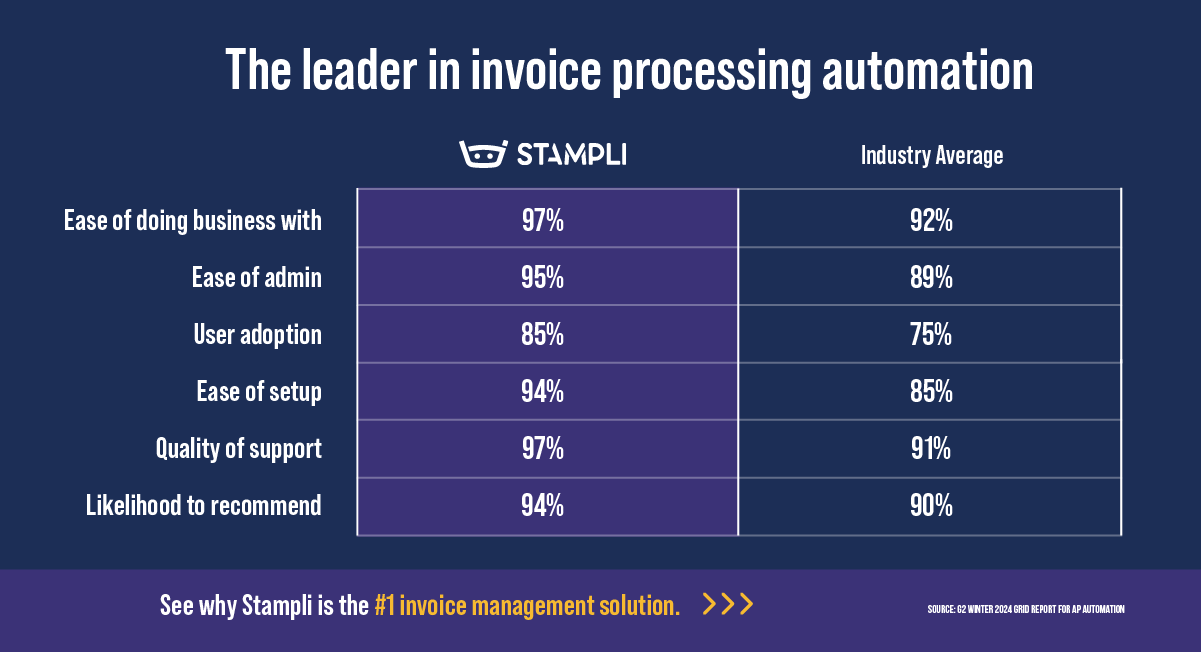
Trust Stampli to help you maximize invoice processing efficiency, provide actionable insights, reduce errors and fraud, and better manage your cash flow.
The bottom line: Stampli is the ideal choice for optimizing your invoice processing workflows. Contact Stampli today for a free demo.


